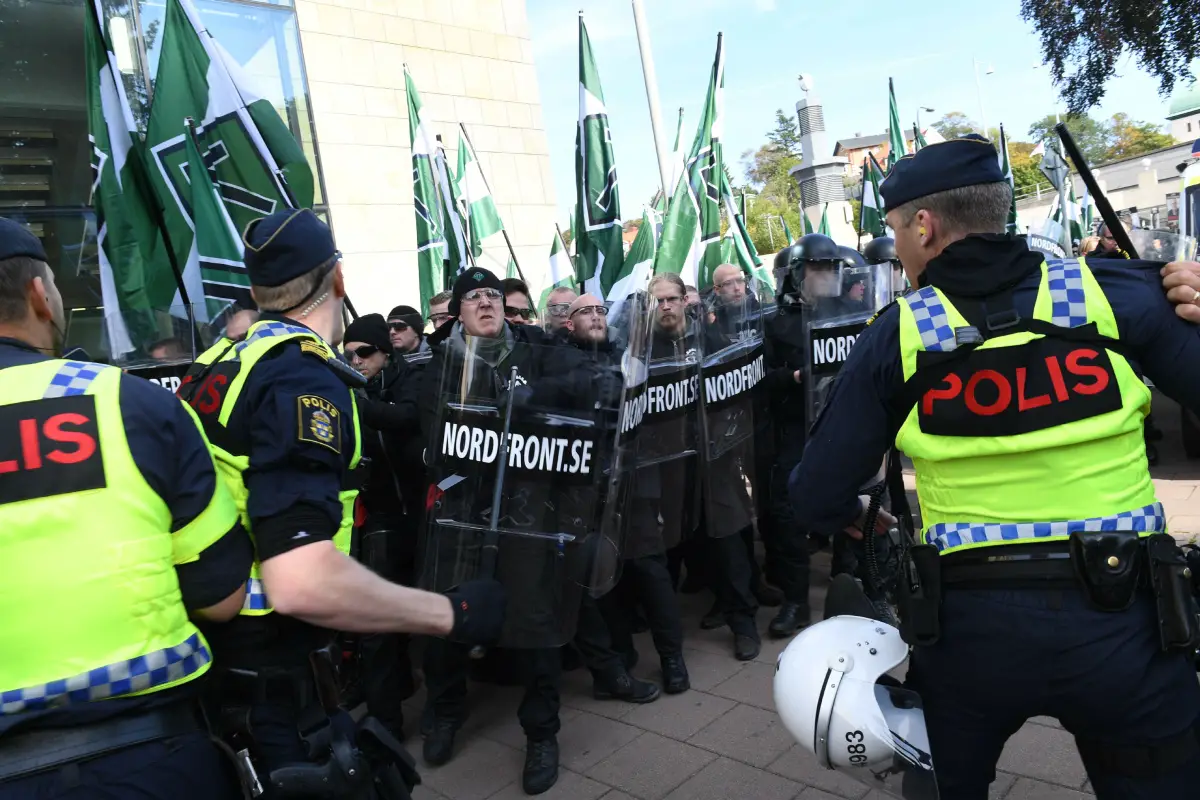Some of the happiest countries on earth are in Europe. Norway, Denmark, Sweden, Austria, the Netherlands and Germany all place in the top twenty most content nations in the world, and Americans are certainly no stranger to the episodic thinkpiece about how much better things are conducted in those Scandinavian countries, where literacy rates are close to a hundred percent, math scores are consistently high, poverty rates are so low they’re practically an afterthought and mildly socialist economic models let governments take care of their citizens more effectively. They’re safe, they’re warm, and they’re welcoming.
But is that really the case? The ongoing refugee crisis battering Europe has been revolutionizing demographic, geographic, and political landscapes since its inception in 2015, giving “the happiest countries” major anxiety, an anxiety that came to a rather portentous breaking point with the election of the right wing, anti-immigrant Austrian People’s Party (ÖVP) to a plurality of seats in that country’s legislature, putting their right wing, anti-immigrant chairman, thirty-one-year-old Sebastian Kurz, on track to potentially becoming the chancellor of Austria.

It seems surprising at first that Austria embraced an aggressive right wing party to head their government, given the nation’s sordid affair with Hitler and Nazism; however, if one steps back to look at the course of events in Europe, they might find that trouble has been brewing in paradise for quite some time, which can only mean that there are even bigger troubles waiting for us all.
Europe, of course, is not clueless when it comes to far right movements sweeping across its lands—the entire continent fought a World War to combat the malignant tumors that were Fascism and Nazism, after all. However, it is worth looking back at what brought Europe to that point in the first place, if only to reacquaint ourselves with the horrors that attended an era that “Guardian” journalist Jonathan Freedland calls “the period when human civilization entered its darkest, bloodiest chapter”: the 1930s.
Though they are cloaked by the black-and-white veil of history, make no mistake—the thirties were violent, uncertain and plagued by economic and political turbulence. The Great Depression exerted its considerable destructive powers everywhere, from the American heartland to the villages of Chile to the ports of Iceland. Weimar Germany was especially hard-hit, still reeling from the reparations they were made to dole out by the accords of the Versailles Treaty in the wake of their defeat in World War I.
The United States, under the Dawes Plan, had been funding Germany with a steady supply of loans to help buttress the German economy; the Great Depression, however, put a wrench in that plan quite rapidly, putting Weimar Germany’s markets on the fritz. Anecdotes of struggling citizens having to cart wheelbarrows full of cash to the markets to buy bread certainly put Germans in no high spirits. The economic devastation engendered the conditions necessary for a young Adolf Hitler to begin sewing the seeds of his decade-long reign of violent genocide by scapegoating the Jewish people and steadily drumming up support for his National Socialist party—what happens next has been painfully well documented: systematic stripping of rights, pogroms, Kristallnacht and the horrors of the Holocaust.
While there is a great deal more that went into bringing about the one most appalling failures of humanity in the twentieth century, it cannot be denied that the espousal of an ideology based on ethnic superiority, intense nationalism and an overriding fear of the Other played a central role.
So what does this bleak lesson in history have anything to do with what’s going on today? As has already been mentioned, far right movements are making a huge comeback in places such as Germany and Austria that have dark histories with far right movements, as well as historically neutral countries, such as Sweden and Denmark, where the onset of refugees from the war-torn regions of the Middle East is throwing the delicate homogeny of their populations into flux. The most crucial element those thinkpieces leave out about harmonious living in Scandinavian nations is how relatively un-diverse they are—the minute the Other enters the scene, all hell breaks loose and the kumbayah spirit is shattered.
Far-right extremists march on the streets of Sweden and Norway, chanting slogans calling for “a secure future for white children” and doors everywhere are closing or are getting ready to shut in the faces of families who desperately need help. While Europe may not be in the same state as it was in the thirties and early forties, and may not be experiencing identical levels of economic disruption, the continent is still recovering from a severe economic crisis that has revived earlier anxieties. Coupled with nativism and rising anti-immigrant and anti-refugee sentiments, these old national insecurities augur no good for the future of acceptance.
America has long prided itself on its exceptionalism, its ability to hold fast to its principles of freedom and democracy in times of international crisis, which, for most of the twentieth century, meant the ability to avoid being sucked in by the vagaries of European politics. With the election of Donald Trump almost one year ago, the legend of American exceptionalism has been noticeably tarnished as the nation subscribes to fears similar to those in Europe concerning immigrants, refugees and anyone who does not fit commonly held notions of Americanness.
Nazi marches are no longer restricted to European streets, you can find them right here, loud and proud, on our college campuses—what happened? Perhaps America was never as exceptional as it made itself out to be. Perhaps America has always been caught in the sway of international politics and the public has just been blissfully unaware. But if the United State’s fate is intertwined with a continent practicing politics of dubious morality at the moment, what does that mean for the nation moving forward?
What’s most terrifying about the rise of the far right in Europe is not that America is losing its exceptionalism. It’s that discourses of suspicion and fear are being globalized, transformed into cudgels that purportedly prosperous, welcoming, “happy” nations are using to beat down groups of people who are already dispossessed beyond imagination. What is terrifying about the rise of the far right in Europe is not that it threatens to bring the world to the brink of war, it’s that it threatens to turn hearts hard and unfeeling. Far right movements have already begot one era of utmost cruelty; I hope sincerely that they do not beget another.

















